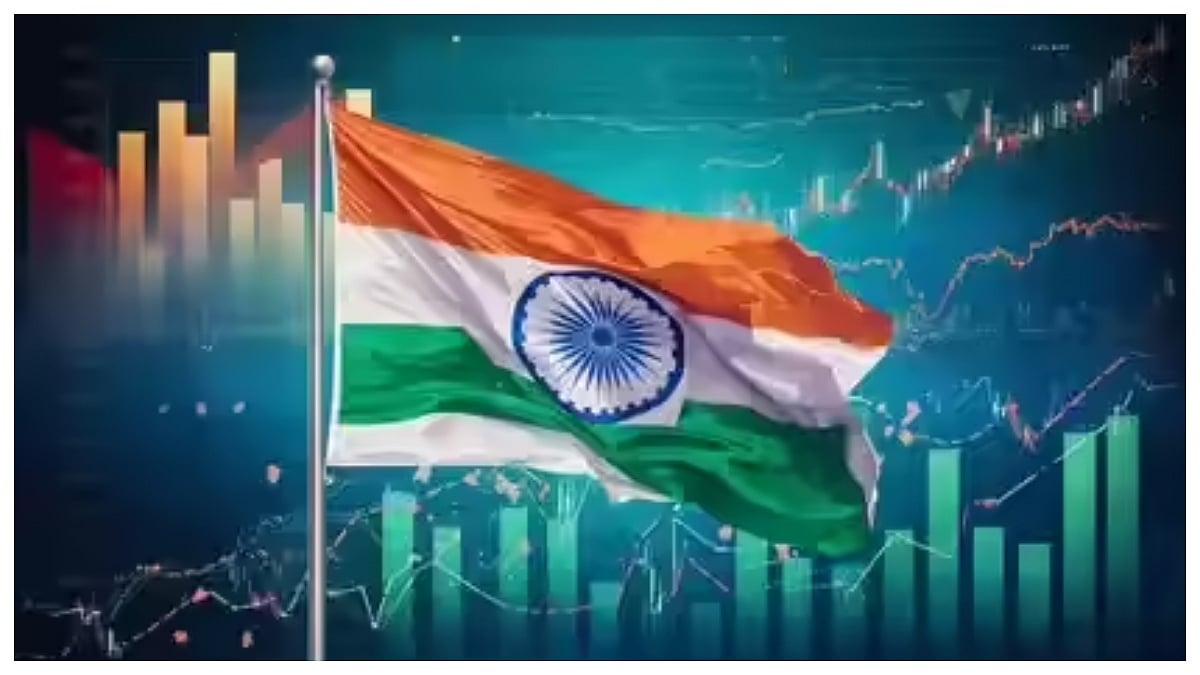For most farmers, agricultural (crop) incomes have been a cause for concern for ages due to its unstable nature. Thus, depending exclusively on agriculture is not advisable. However, animal husbandry and allied activities could support the farmer and help add some level of stability in income flows.
The key to achieving the target of doubling farmers’ income is only possible by strengthening livestock farming along with crop farming. To learn more about ways to improve the productivity of livestock and other concerns in the animal husbandry business, SIES and Free Press Journal in association with NSE, NCDEX Investor (Client) Protection Fund Trust, and East West Seed organised a webinar titled ‘Animal Husbandry - Economics and Fallacies’. The panellists for the session were Juan F Moreno, CEO, Sexing Technologies (BAIF); Arun Raste, Executive Director, NDDB; and KV Shaji, Deputy Managing Director, NABARD. It was moderated by RN Bhaskar, consulting editor and the welcome address was made by Dr Vaneeta Raney, head BMM, SIES College of Arts, Science & Commerce.
Given below are edited excerpts with editorial support from Jescilia K.
A ray of hope during COVID-19 times
KV Shaji, Deputy Managing Director, NABARD: Equitable growth is needed right now. India’s GDP was one of the fastest-growing but due to the present situation, the growth is stagnating.
Only the agriculture sector is expected to grow during these trying times. Reports are suggesting that most of the sectors are de-growing whereas agriculture is expected to add 4-5 per cent of GDP growth. So, agriculture is positive.
At the time of distress, we go back to our basics. Agriculture is the only sector that is giving us hope.
Even before the COVID-19 pandemic, the government had outlined its priority — farmers’ income should double. This is to ensure equitable growth in the country. This was defined at the time, India was growing at a faster pace, but agriculture was not. But now things are picking up on the agriculture front.
As a response to the pandemic, the Indian government announced a series of packages. One such programme is Aatma Nirbhar Bharat which is self-sufficient India. If you want to become self-sufficient India, then you have to become a self-sufficient village and for each village to become self-sufficient, each farmer has to be self-sufficient. If every farmer has to become self-sufficient, then every woman — who is the key in the family — has to be self-sufficient. We are activating all our functionaries in this direction.
Continued dependence on agriculture makes farmers poorer
Juan F Moreno, CEO, Sexing Technologies: Our foremost responsibility is to feed the growing population in the world. We have around 7 billion people on the earth and we are heading to 10 billion. Even as the population grows, we cannot make more earth to produce more food products. So, we will have limited space on earth to produce more food.
We bear the responsibility of feeding the 10 billion people that will be in this world. To accomplish this task, we have to look at increasing productivity. To increase productivity, we will have to look at various technologies that are available to us. The greatest technology that humankind has seen is artificial insemination (AI). The product can be delivered to the farmer in a very simple way through a little plastic straw. This will help in giving birth to milch animals which offer higher yields.
Arun Raste, Executive Director, NDDB: Excessive dependency on agriculture leads to low income among farmers especially in a country like India, where farmers are dependent on agriculture. The share of agriculture in gross value added (GVA) is 17.2 per cent now. It was 18.5 per cent about ten years ago. About 50 per cent of the population is contributing only 17.2 per cent. That means that such a situation will make people poorer if they continue to remain dependent on agriculture. We need to increase the productivity of agriculture and allied sectors.
The share of livestock in agriculture is going up which includes dairy, poultry, fishery and others. It has gone up from 21 per cent a decade ago to around 29 per cent. In economic terms, of the total GVA of 4 per cent, the livestock share has gone up to 5 per cent. Of that, around 61 per cent is dairy, 21 per cent is meat, 6 per cent is dung and rest is honey, wool and others.
Livestock has an inverse relationship with poverty. More animals a farmer has, it is easy for him to come out of poverty.
We have a population of 1.3 billion people and 536 million animals. From 536 million animals, only 302 million are bovine animals.
In India, 85 per cent of small and marginal farmers own 75 per cent of bovine animals. If you are talking of livestock, it is more equitable than agriculture in India.
In animal husbandry, two sectors in India have grown — dairy and poultry. The growth of both sectors was due to two gigantic people Dr Varghese Kurien and B V Rao. There is a need to run a campaign (again) to increase the consumption of milk and egg. We are way below the global standard when it comes to consumption.
KV Shaji, Deputy Managing Director, NABARD: Around 85 per cent of small and marginal farmers own only 47 per cent of farmland in India. Land in India is not equally distributed in the country. In the case of small and marginal farmers, it is skewed. If the farmer has to become self-sufficient, then farming alone cannot help. This is where the role of animal husbandry comes into play.
To become self-sufficient, animal husbandry has to be supported and promoted. When the Prime Minister spoke about self-sufficient India, we translate that to self-sufficient farmers.
The value of milk is higher compared to the value of rice and wheat put together. Animal husbandry is more or less like a risk mitigation factor for agriculture. It will help in improving the cash flow of farmers.
Animal husbandry’s value can only be realised over a period of time. Thus, there is a need for capital. To meet the capital needs of agriculture, NABARD — along with the government — is coming out with various schemes. Earlier, the Kisan credit card was limited to crops but now has been extended to animal husbandry as well. So, farmers can avail Rs 1.6 lakh credit without any collateral.
There are schemes for entrepreneurs as well to help them with their start-ups.
Technology-intervention in animal husbandry
Juan F Moreno: We are very fortunate to associate with BAIF in India. This collaboration was established due to the association with the Bill & Melinda Gates Foundation.
We founded and collaborated with BAIF to establish a sex sorting laboratory in India. It has now been operating for over a year and a half. We have been able to deliver half a million sex semen straws. From this sex semen straws around 1,50,000 calves are born in India. It is exciting to see the technology come into operation in the country.
BAIF has some incredible logistical systems to deliver the sexed semen — not just in Pune, but in different states in India.
We are into the production of sexed-semen. Using this technology, we can provide semen that will enable the birth of 90-95 per cent female calves as against the original ratio of 50 per cent male and 50 per cent female.
This extra female calf that is born on a farm can represent a significant increase in milk production for their families, communities, nations and the world as a whole. It will not just improve the livelihood of the family but the nutrition levels as well.
By utilising technology like sex semen, we can quickly move towards producing more food in the same amount of space that you are utilising today.
With the population of humans increasing, there will be no more space that can be dedicated to humans and less to animals. Thus, the productivity of the animals will have to go up.
There are technologies like DNA sequencing, genomic prediction among others to improve genetic traits in cattle.
For instance, we have been involved in a programme for the last six years whereby we get more milk from animals with less feed. There are other technologies as well, which help improve productivity.
At this terrible time of COVID-19, the world depends on the agriculture sector to keep producing.
What is slowing down credit flow?
Arun Raste: The credit flow is only 12 per cent in animal husbandry. There is a huge gap in terms of the credit that flows into animal husbandry which includes cow, sheep, goat, pig, fish and others. We need to augment the flow of credit to this sector. While NABARD is offering full-fledged support, the transmission level is low among banks.
KV Shaji: Historically, the interest subvention part was skewed towards working capital needs. Thus, there is a reporting problem there.
Yet another problem is the accessibility and availability of loans. A farmer usually does not have collateral. So, we are addressing this issue with the credit guarantee/ enhancement. If a farmer is going in for an investment activity up to Rs 2 crore, the government is guaranteeing that to the banker. So, the banker is comfortable. The government will be bearing the guarantee fee as well.
In case, there is an issue with cash flow from the farmer’s side then the government will step in.
In the case of interest rate subvention, there are subventions in short-term loans. Now, the government has initiated subventions for long-term loans as well. So, it is available at a cheaper rate.
In the next one or two years, the credit flow to the sector will improve as the availability and accessibility factor will be addressed. Like the PSB-59-minute portal for MSMEs (https://www.psbloansin59minutes.com/home), there will be one for agriculture as well. This on-demand agriculture loan will be under a self-sufficient India (Aatma Nirbhar Bharat) package. The farmers can choose the bank and the bank cannot refuse the loan as the government will be guaranteeing the loan. This will empower the farmers.
Scope of investment in animal husbandry
Juan F Moreno: We made a significant investment in India. We invested in the BAIF laboratory and then for the second laboratory. We will be investing in many more sex sorting laboratories in India. The Indian government has introduced additional programmes to build more sex sorting laboratories.
It is estimated that the size of the semen market in India will be around 90 million (semen) straws. In India, we produce 5,00,000 straws which are minuscule — we have a long way to go. We have to work towards making this a successful endeavour.
There are different levels of investments needed to make this a viable entity. You got to invest in land, deploy bulls for semen collection (500 bulls to produce 10 million straws), setting-up sex sorting laboratory, training people and others — all this would need one to invest around millions of dollars to get going. Investment in such a business is quite significant and is long-term. These investments come from various sources—loan, government grants and other sources. Team effort is needed to set-up such a business.
Arun Raste: There is a need to invest a lot more in the sex sorting business. As per the statistics, only 29 per cent of animals get AI services in India. There is a huge scope in terms of business. This shows 70 per cent of animals in India need AI services.
It is skewed in some states. In Tamil Nadu and other southern states, the coverage is around 70 per cent, whereas states in North-east like Arunachal Pradesh the coverage is just 2 per cent. So, there is a huge scope. This is not a one-time business and you need to do it year-on-year.
Why blame the poor animal for greenhouse gases
Arun Raste: There is a lot of focus on greenhouse gases (GHG). While the five biggest pollutants are not blamed for their emissions, the poor animal is blamed for GHG emissions. Today fossil fuel (transport), electricity and individual homes contribute 27 per cent, 22 per cent and 12 per cent respectively in terms of GHG, whereas the contribution of animal husbandry is only 10 per cent. Yet, the dairy sector is singled out for GHG, whereas other sectors continue to contribute to emissions.
Juan F Moreno: Global warming is a reality. The world has been warming up ever since the ice ages. If the number of people on earth continues to grow — a lot more inputs and outputs will become necessary. This will lead to a certain amount of heat which we will have to deal with.
We need to find ways to reduce emission levels. So, we have to work responsibly. There is a need to look for efficient systems like electric cars and ways to improve farm productivity including agriculture and its allied activities.
In the case of animal husbandry, it means better genetics among animals; different technologies to improve efficiency; and educating farmers on how to feed animals and grow crops better. We need to get better in whatever we do or else we will end up blaming each other. There will be plenty of things to blame each other for. But we all must take responsibility for this.
We are moving towards a society where more and more people will live in cities. Those people in the cities will demand farmers to produce food in certain ways. Whether we like it or not, we will have to do that. This is because hot subjects like global warming are out there and we have to address it. With the large number of people moving to cities, the voting population will be skewed towards these cities (so, certain decisions will be made based on that).
K V Shaji: In the climate change front, NABARD is advocating climate-smart agriculture and animal husbandry practices. We are having a climate change fund assisted by Asian Development Bank and then there is a National Adaptation Fund from the government of India. We are advocating practises that increase productivity which means a lesser population of cattle but higher yields.
Keeping this in mind, we are asking farmers to diversify. There is a linkage between agriculture and animal husbandry and that interlinkage has to be effectively utilised. Our district development managers are sensitising the farmers on this.
What lies ahead
Arun Raste: We require sex sorting going forward. We are trying to develop that technology indigenously. This would be the requirement of the country.
In terms of AI(artificial insemination), unfortunately, the success rate is quite low as far as implementation is concerned. On average, out of three AI services, only one gets actual results. A lot of money is wasted in this process. So, we have to improve in that area. We need to strengthen AI both in terms of number and timely accessibility of the services.
Along with AI, animal health is also a concern. The industry should be worried about animal health. Indian Immunologicals Ltd (IIL), which is NDDB’s subsidiary, is one of the largest producers of vaccines. IIL produces 240 million doses of FMD (foot and mouth disease) vaccine. But there are not many agencies in India who are present in the animal vaccine business. So if severe acute respiratory syndrome (SARS) or COVID-19 equivalent illnesses suddenly emerge among animals, there will be very few who can deal with it. Thus, there is a need to have this infrastructure in place. In addition, there is a need for more research in this industry.
KV Shaji: In the case of animal husbandry, we have an infrastructure fund which is managed by NABARD, its outlay is Rs 15,000 crore. Under this scheme, NABARD will give credit guarantee and interest subvention to entrepreneurs. We need to have such schemes to smoothen the cash flow to these entrepreneurs.
We need a technology which agri entrepreneurs can avail of and NABARD should be able to provide them with capital. NABARD in association with other institutions has set-up incubation centres at five locations.
Then there is an agriculture infrastructure fund which is a large fund, where we are contemplating an outlay of Rs 1 lakh crore. This will benefit all the migrants that returned to their respective villages. In case, any of these migrants wish to become entrepreneurs, the fund will be made available for their needs.
It is our duty to ensure that people are not distressed during this time of the pandemic.








